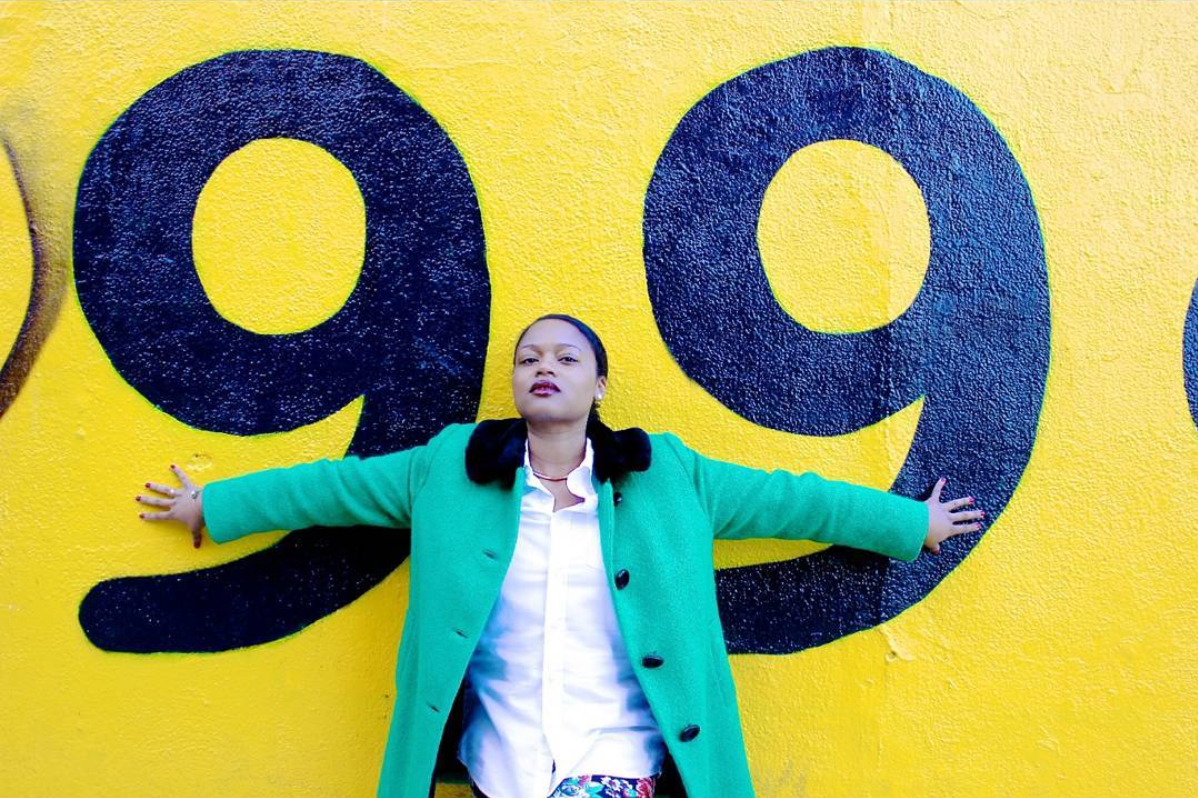When Chaédria LaBouvier embarked on the Guggenheim Museum to curate the exhibition for “Basquiat’s ‘Defacement’: The Untold Story,” she made history, knocking down “firsts” like bowling pins. And now, she’s adding another layer to that history — saying in a viral tweet last week, that working at the Guggenheim was the “most racist professional experience of my life.” Specifically, she credits this to Chief Curator Nancy Spector’s actions.
A writer and Basquiat scholar, LaBouvier is the first Black curator, first Black woman and the first curator of Cuban descent to organize a show for the Guggenheim. She’s also the first Black author of a Guggenheim catalog. LaBouvier was 33 when the show debuted, making her the youngest independent curator at the venerated institution as well.
Black women know all too well that being “a first” too often comes with constant experiences of discrimination, micro-aggressions and hostility. LaBouvier says that she is no exception. Growing up with three Basquiat drawings above the sofa in her home, the native Texan says her exposure to the artist “instigated my lifelong interest.” She’s been a scholar of the intersections between race, class, gender and police brutality since her time at William’s College, and she was originally excited to continue that work at her historic Guggenheim exhibition.
However, at the Guggenheim, LaBouvier tells ESSENCE, Nancy Spector and others allegedly “erased my labor on all fronts — financial labor, emotional labor, and professional labor.” For example, LaBouvier was the author of the catalog. However, the Guggenheim’s records seem to list three other co-authors, including Spector. Why this decision was made remains unclear, but LaBouvier says it’s another example of how she thinks her work was being erased.
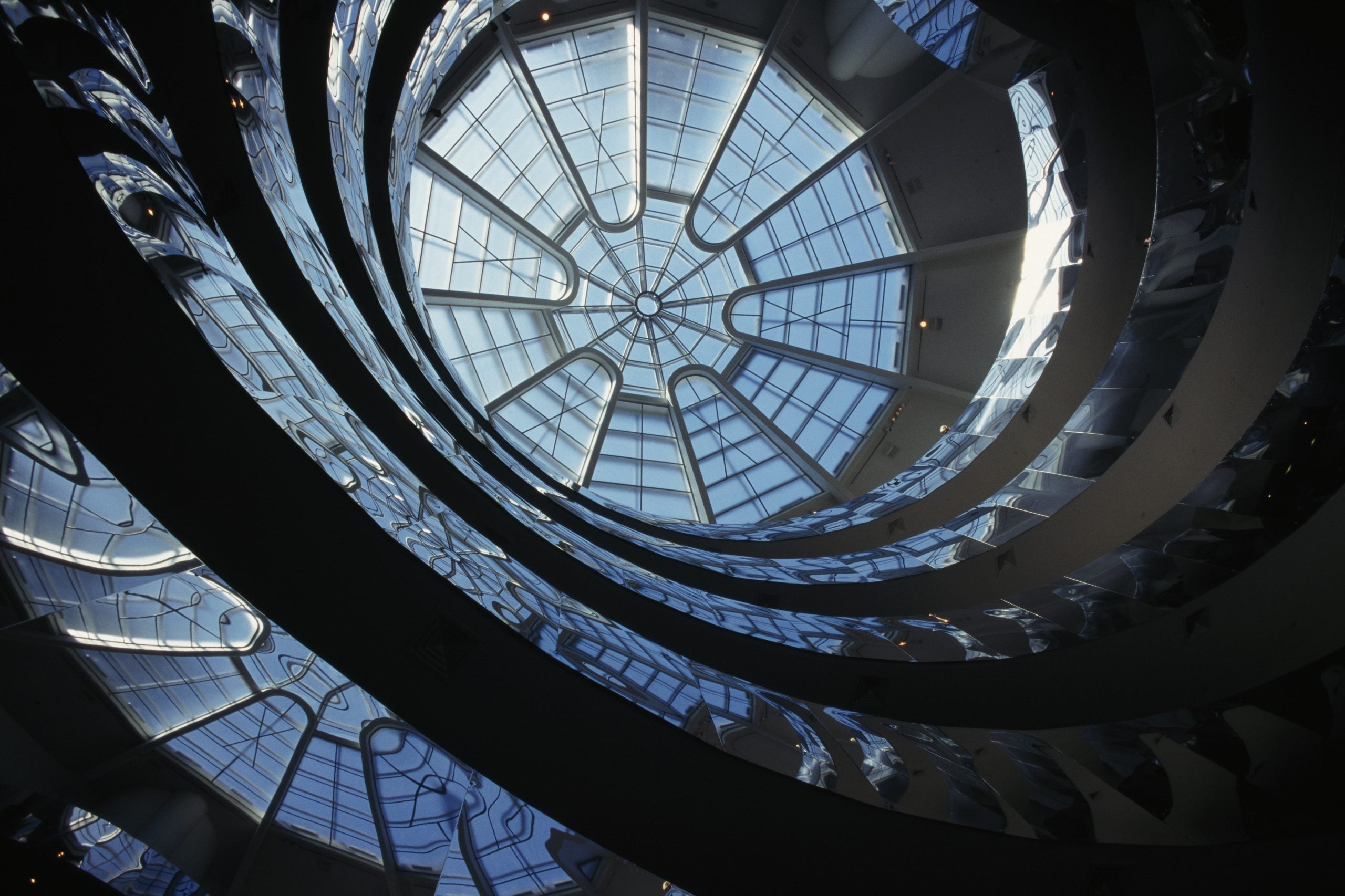
In a statement to ESSENCE, a rep for the museum said: “The exhibition was one of the first programmatic efforts for the museum to confront its own role in our nation’s patterns of injustice, an effort that we are continuing to work on with a critical examination of inherent bias in both the workplace and in our history.” The statement continued, “Ms. LaBouvier was supported by the museum with the collaborative spirit with which exhibitions are made at the Guggenheim. Ms. La Bouvier was prominently credited within the exhibition and its related materials, including the catalog, where she is listed on the cover as sole author. Despite her accusations, the museum credited her with being the first Black female curator in the museum’s history.”
This, in fact, is true. However, LaBouvier is the first Black curator at the Guggenheim, not just the first Black woman curator. In 1996, with the show “In/Sight: African Photographers, 1940 to the Present”, Nigerian art critic and writer Okwui Enwezor became the first Black co-curator of an exhibition at the Guggenheim. He should be recognized for his outstanding work and his ability to decenter the Western gaze during his 1996 exhibit.
The Guggenheim, though, has consistently referred to LaBouvier — and many news outlets have done the same — as a solo curator. The difference between “curator” and “solo curator” is hard to parse. At first glance, that may seem correct. However “solo curator” is a term that is almost never used in the art world. The standard is to refer to people as either co-curators or curators.
“Given the traumatic and difficult moment that our nation is experiencing around issues of race, class and systemic oppression, we are taking stock of our role and how we can do better as an institution,” the museum’s statement on the matter concluded. “We recognize the missteps made in our 80-year history, and are committed to doing the work needed to make our organization more equitable, inclusive, and representative of our broader community.”
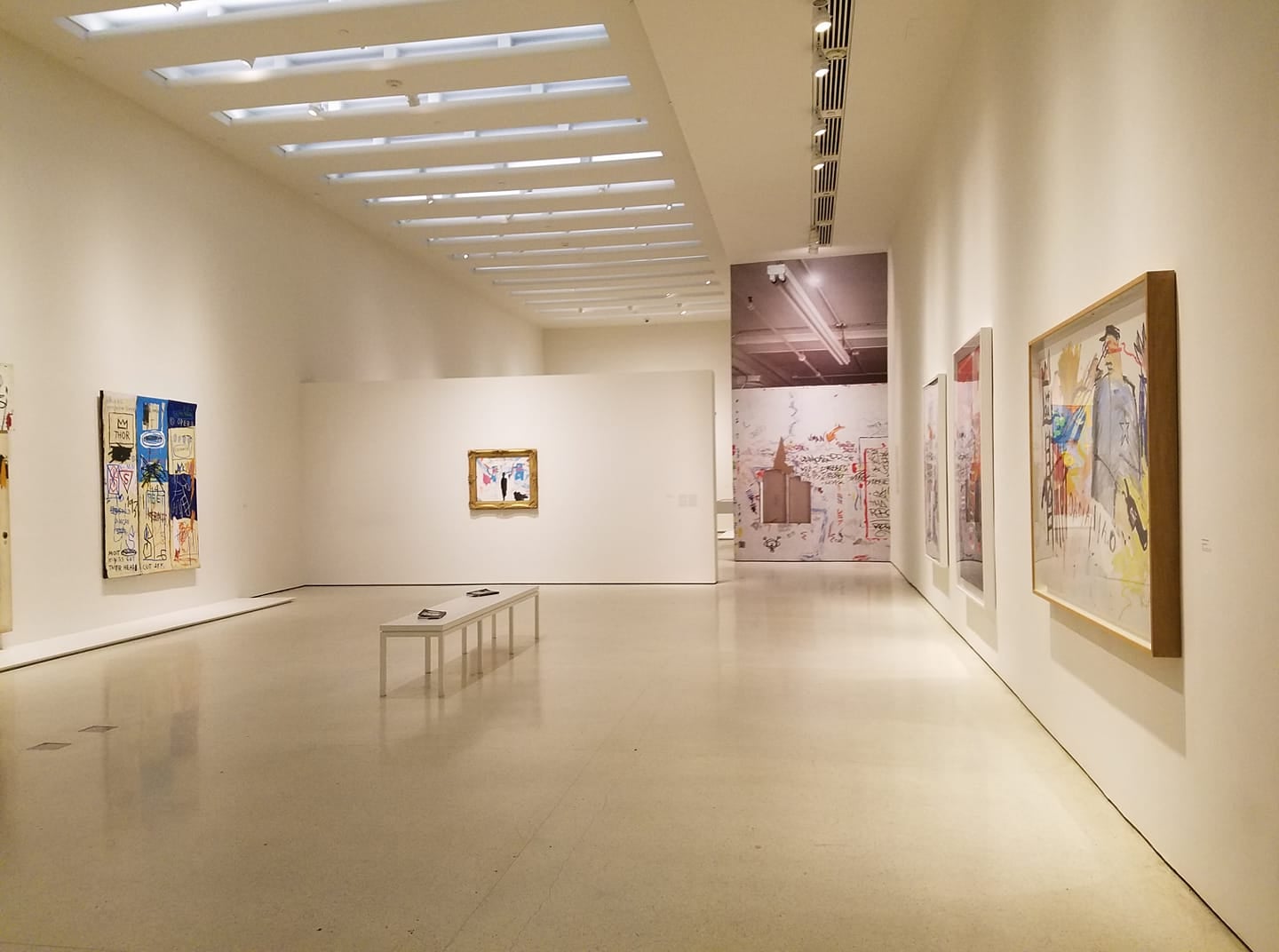
The alleged racism at the Guggenheim is a crucial part of the history of the Basquiat exhibit, but it doesn’t define or limit LaBouvier’s work which is quite radical and necessary, particularly in a time when protests against police brutality and racism are sweeping the globe.
The Basquiat exhibit curated by the UCLA alum who holds a Master of Fine Arts, centered on the revered artist’s raw, painful response to the death of another young Black artist, 25-year-old Michael Stewart, at the hands of New York City transit officers. Stewart was arrested for spraying graffiti on the walls of an NYC subway station. Works included in LaBouvier’s deeply researched display offer a unique look at Basquiat’s exploration of Black identity, and his fervent opposition to police brutality.
Journalist Siddhartha Mitter, who wrote a piece on the exhibition for the New York Times, told ESSENCE, “I think the genius of the show was how it transported us into a powerful mobilizing moment in the life of the city and its artists. Seeing for the first time the work of Michael Stewart, the artist and full human, not the victim, alongside the work by Basquiat, Haring, Hammons, and others who responded to his murder, was crucial. It’s a reminder that real rigor in this work isn’t just intellectual but centers dignity.”
What does it say about the nature of whiteness, the nature of the beast of racism that so many of us are fighting, that an institution would reportedly suppress critical work by a brilliant Black scholar to their own detriment? And what does it mean that a show based on Jean Michel Basquiat’s “Defacement (The Death of Michael Stewart)” was the work that LaBouvier says they chose to suppress?
LaBouvier’s show features the painting “Defacement,” which was painted directly onto artist Keith Haring’s studio wall, and explores how 1980’s racism and police brutality impacted Basquiat and other artists. For her essay in the catalog, LaBouvier interviewed artists, a member of the initial grand jury, and Michael Stewart’s mother, Carrie. The show also features work by other artists in response to Stewart’s death, as well as some of Stewart’s own work.
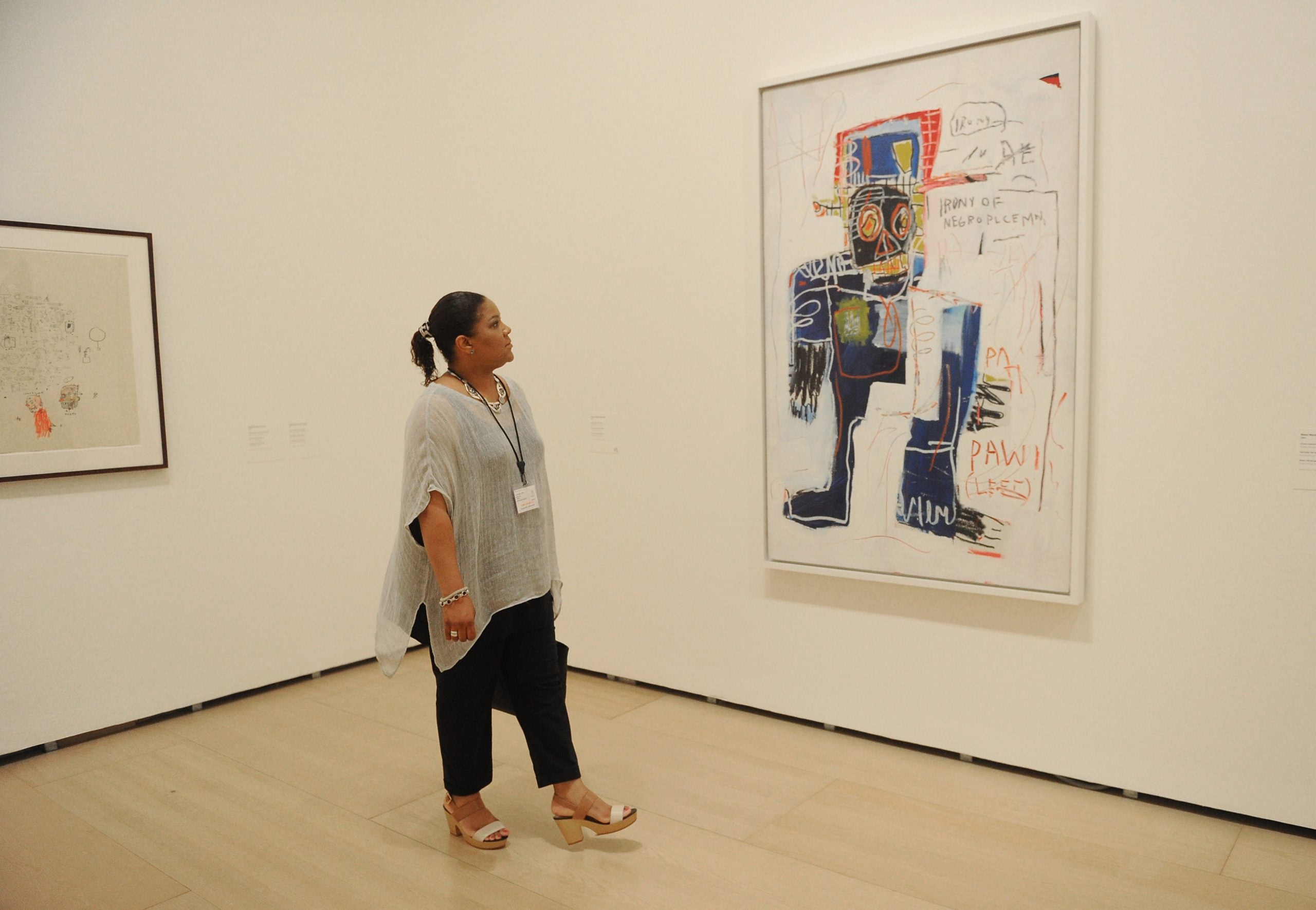
Despite the groundbreaking nature of the show, LaBouvier says she felt her work was thwarted and co-opted constantly. Even so, she refused to give up ownership. LaBouvier now says that her defiance allegedly prompted The Guggenheim to threaten withholding payment from her unless she returned her work badge. There were also, what LaBouvier calls, “Freudian slips” in HR meetings, where she alleges Michael Stewart’s family was referred to as “property.” In addition, the young curator says she was blocked from speaking with the press, including Black publications, who were told that she wasn’t available for interviews. ESSENCE reached out to speak with LaBouvier during the time of the exhibit’s initial run and was told the same.
“The Guggenheim compounded their [racist] violence by turning the Black press away, when there’s a history of the Black press reporting on these stories when mainstream white presses would not. It’s an ugly history that the Guggenheim has now placed itself a part of,” LaBouvier says.
Stewart’s death changed New York history, LaBouvier tells ESSENCE. And the purpose of the show was to bring that history to the public for them to engage in. That happened, as the show did receive rave reviews. But the racism that LaBouvier allegedly experienced, as well as the sabotaging the Guggenheim allegedly engaged in, is part of the history of this show as well.
There’s a delicate balance to be struck here. LaBouvier’s work — both the work that she has created and the work that she has yet to birth into the world — is more important than any racist microaggression. At the same time, institutions like the Guggenheim need to be held accountable for their long and ongoing history of alleged racist violence towards Black creators. And incidents like these spark conversations among Black creatives about how to present their work to the public without being censored, while still benefiting from the access to needed resources.
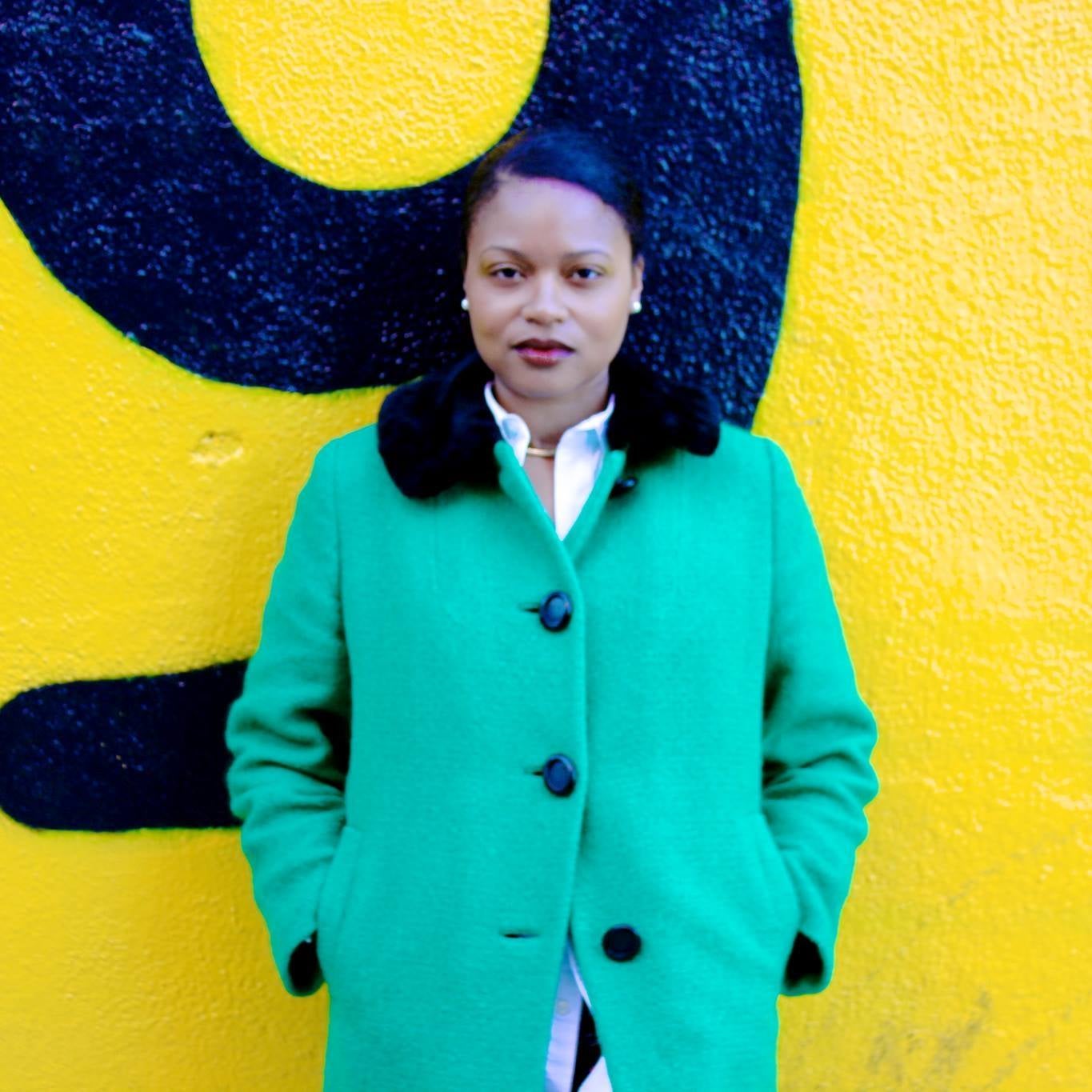
For LaBouvier, she says she doesn’t want her or her scholarship to be defined by this experience. “That’s part of what you do when you deny people the agency of their story; you’re hoping to write their story,” she tells ESSENCE.
As the co-founder of Mothers Against Police Brutality, LaBouvier wants Black people to keep the spirit of this show, of Basquiat and other artists’ response to the unjust killing of a Black man, at the forefront.
“I want people to remember that this is still a deeply important show. Art history was made,” she says. And amid the alleged racism that LaBouvier experienced, she hopes that the public can hold space for both of these truths — the groundbreaking nature of the work and the insidious racism that she says tried to suppress it.
“For this to become a story only about racism, it centers the way in which an institution tried to ruin me and my career. I think that the works are owed more than that. Michael Stewart is owed more than that. I think that I’m owed more than that.”
LaBouvier is currently talking with Michael Stewart’s family, having evolving discussions about how to further the conversation for the public.
But wherever her work takes her, it likely won’t be back to the Guggenheim. She admits, “They weren’t ready to have a Black woman lead a show like this. And they weren’t ready for the mirror that this type of show asked the museum to turn onto itself.”

